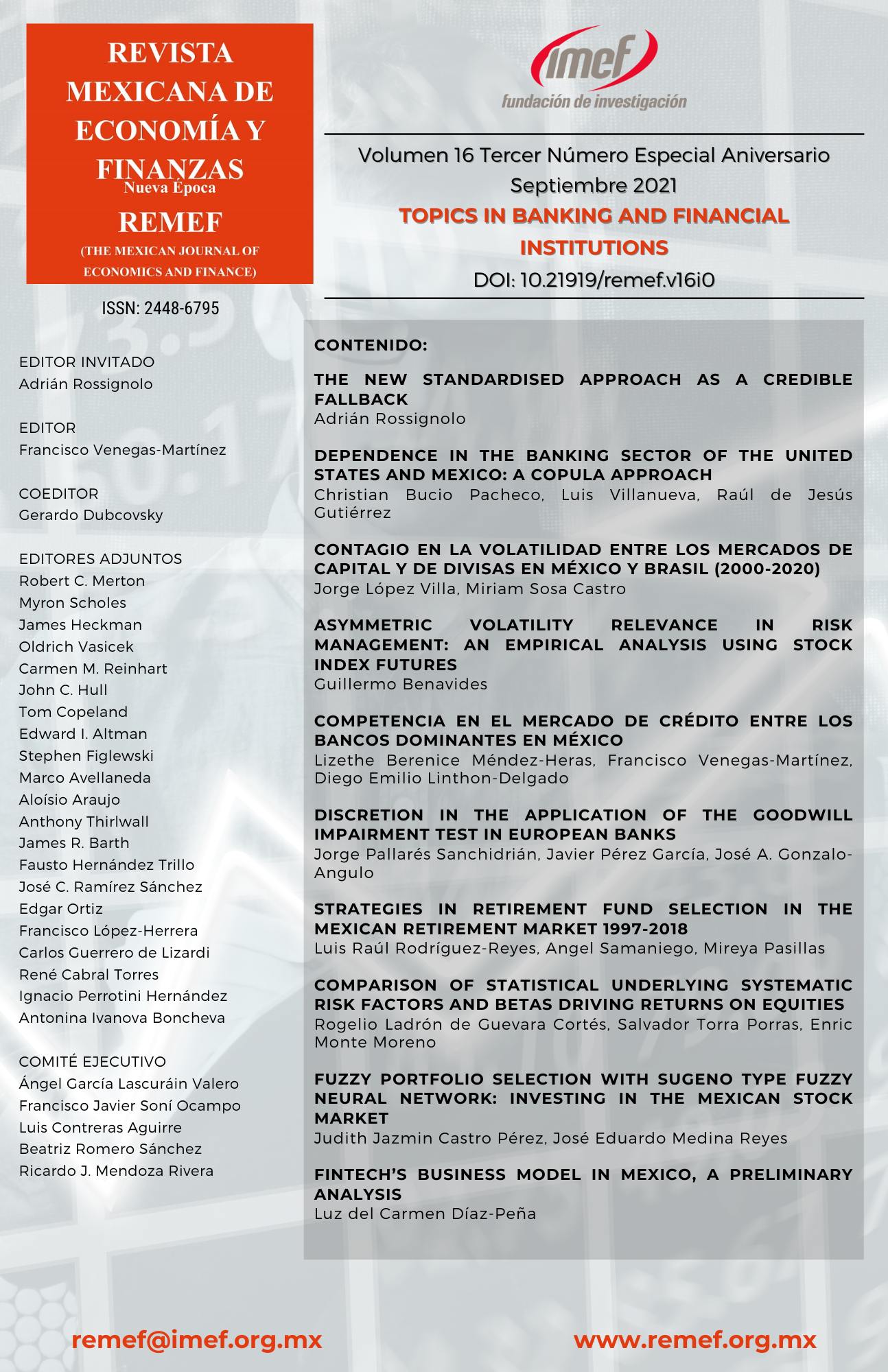Asymmetric Volatility Relevance in Risk Management: An Empirical Analysis using Stock Index Futures
DOI:
https://doi.org/10.21919/remef.v16i0.704Keywords:
Asymmetric volatility, backtesting, GARCH, TARCH, implied volatility, stock index futures, Value at Risk, MexicoAbstract
The objective of this research work is to show the relevance of asymmetries in estimating volatility. The methodology consists in the application of ARCH-type models and implied volatilities of options (IV) to estimate Value-at-Risk (VaR). These for a portfolio of stock index futures for various time horizons. The empirical analysis is carried out for the futures contracts for the Standard and Poors 500 and Mexican Stock Exchange Indices. According to the results, the IV model is superior in terms of precision compared to the ARCH-type models. It is recommended to use the relevant statistical gains when asymmetries are included with respect to when asymmetries are not used. The referred gains range from 4 to 150 basis points of minimum capital risk requirements. The originality of the present work consists of showing the importance of considering the asymmetric effects with IV and ARCH-type models in volatility forecasts within risk management analysis. It is concluded that the methodology means gains in monetary terms.
Downloads
Metrics
Downloads
Published
How to Cite
Issue
Section
License
PlumX detalle de metricas








